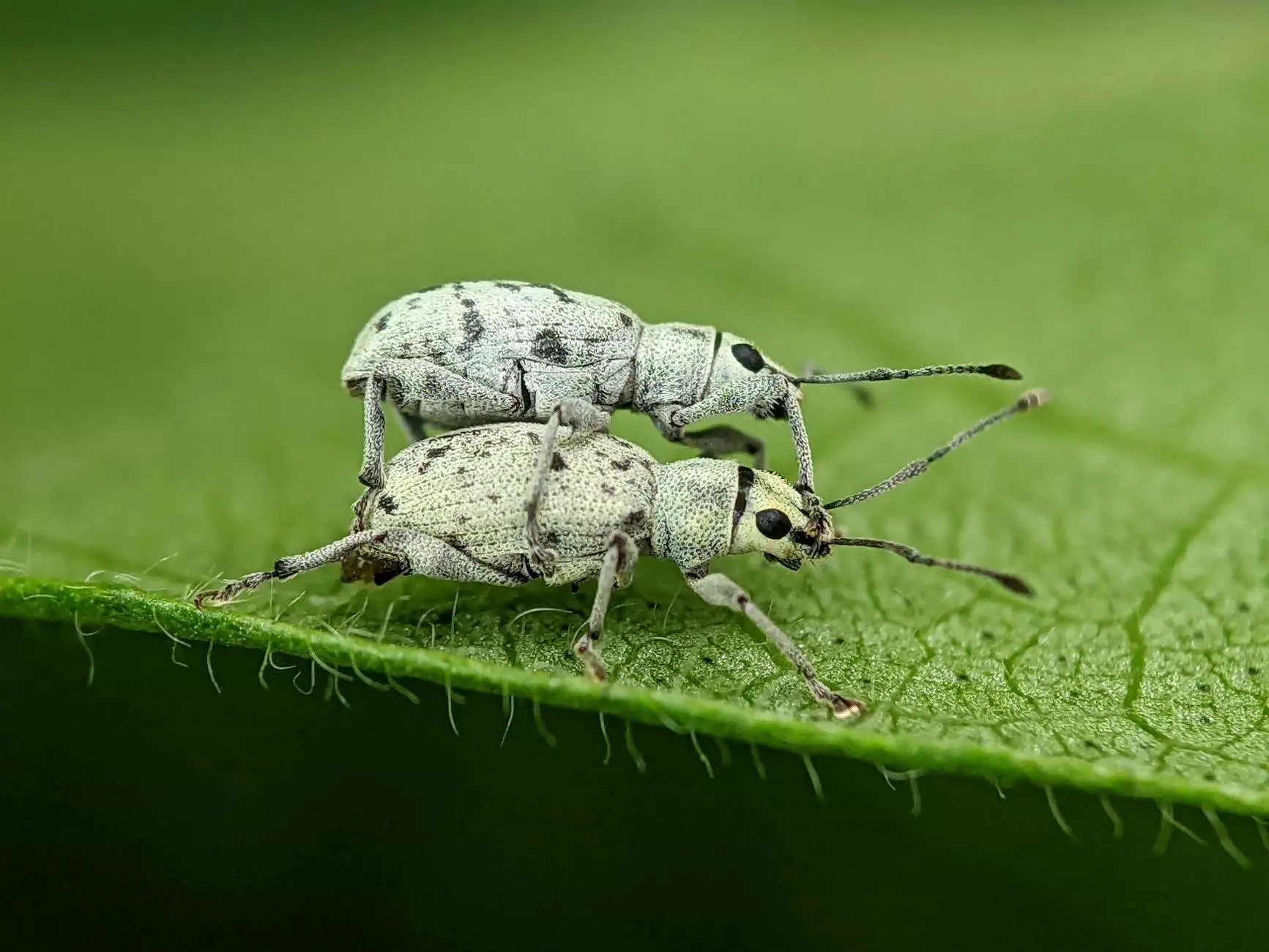Effective Weevil Control in Stored Grain: Strategies for Farmers

In the world of agricultural excellence, weevil control in stored grain stands as an essential aspect that no farmer can afford to overlook. These minuscule pests, specifically the rice weevil (*Sitophilus oryzae*) and the granary weevil (*Sitophilus granarius*), can compromise the integrity, quality, and economic value of stored grains if left unchecked. This article delves into the most effective strategies for controlling weevil populations in stored grain, ensuring farmers can provide high-quality products to the market and safeguard their investments.
Understanding Weevils and Their Impact
Before diving into control measures, it’s crucial to understand the biology and behavior of weevils. These insects are notorious for infesting various types of grains, including but not limited to wheat, barley, corn, and rice. Weevils infest grain stores by laying eggs within the kernels, and upon hatching, the larvae feed on the grain, leading to significant losses. The consequences of an infestation can be dire, including:
- Loss of Weight: Infestations lead to a decrease in the weight of stored grains.
- Quality Reduction: Weevil damage affects the nutritional quality and marketability of the grain.
- Increased Cost: Farmers might incur additional expenses in pest control and loss recovery.
Preventive Measures for Weevil Control
To combat weevil infestations, preventative measures play a pivotal role. Here are the most effective strategies:
1. Proper Grain Storage Techniques
Storing grains in airtight containers can significantly reduce the chances of infestation. Here are some tips:
- Use sealed bins made of durable materials to protect grains from pests.
- Ensure containers are clean and dry before filling them with grain.
- Implement temperature and humidity controls as both factors contribute to weevil survival and reproduction.
2. Regular Inspection and Monitoring
Frequent checks for signs of infestation are vital in maintaining control. This includes:
- Inspecting stored grain every week for any signs of weevil activity.
- Using pheromone traps to monitor the presence and density of weevils.
- Conducting a fumigation analysis to determine the need for intervention.
3. Implementing Biological Control Methods
Biological control harnesses natural predators and parasites of the weevil.
- Beneficial insects, such as predatory beetles, can be introduced in stored grain facilities.
- Utilize pheromone traps that attract and kill male weevils, reducing breeding rates.
Chemical Controls: When Necessary
When preventive measures are insufficient, chemical controls may be needed. Here are options for farmers:
1. Insecticides
Insecticides can effectively manage severe infestations of weevils. However, it is crucial to select products labeled specifically for stored grain use. Key points include:
- Follow the manufacturer's instructions carefully to ensure safety and efficacy.
- Consider using residual insecticides inside storage facilities to maintain prolonged protection.
2. Fumigation
For extensive infestations, fumigation may be the most effective solution. This process involves:
- Sealing storage areas and using gaseous pesticides that penetrate all grain surfaces.
- Hiring certified professionals, as fumigation can pose safety risks if not done correctly.
Integrated Pest Management (IPM)
A long-term, sustainable approach to pest management can be achieved through Integrated Pest Management (IPM). Such strategies will:
- Combine mechanical, cultural, biological, and chemical control methods tailored to specific situations.
- Focus on long-term control using knowledge about the pest and its interaction with the environment.
1. Cultural Practices
Implementing cultural practices can significantly impact weevil management. These may include:
- Ensuring proper sanitation in storage facilities by disposing of old grain and debris.
- Avoiding the mixing of new grain with stored grain to reduce the risk of introducing pests.
2. Environmental Modifications
Sometimes, modifications in the storage environment can deter weevil presence.
- Using temperature control systems to decrease temperatures below survival thresholds for weevils.
- Keeping storage facilities well ventilated to regulate moisture levels.
Educating Staff and Stakeholders
Education is crucial in maintaining weevil-free grain stores. Training staff on the signs of weevil infestation and proper handling procedures can enhance control efforts. This may include:
- Regular training sessions that cover pest identification and control strategies.
- Creating a team responsible for weekly inspections and reporting.
Conclusion: A Call to Action for Farmers
Weevil control in stored grain is a critical component of successful agricultural practices. By leveraging a mix of preventative strategies, chemical controls, and integrated management approaches, farmers can protect their valuable grain stores from these destructive pests. Understanding and adapting to the behaviors of weevils will help farmers maintain the quality of their products, subsequently protecting their livelihoods.
As we move forward into an era of increasing food demands, it is imperative for the agricultural community to stay informed and proactive in pest management practices. Together, we can cultivate a healthier future!



